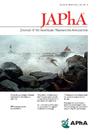Comparative effectiveness of buprenorphine adherence with telemedicine vs. in-person for rural and urban patients
IF 2.5
4区 医学
Q3 PHARMACOLOGY & PHARMACY
Journal of the American Pharmacists Association
Pub Date : 2025-03-01
DOI:10.1016/j.japh.2024.102318
引用次数: 0
Abstract
Background
Policy changes during the COVID-19 pandemic allowed buprenorphine to be prescribed for opioid use disorder via telemedicine without an in-person visit. A recently proposed change will limit buprenorphine access to 30 days without an in-person visit. Given that people living in rural areas may be disproportionally impacted by this change, we sought to better understand how buprenorphine adherence may be impacted by requiring in-person visits.
Objective
Compare buprenorphine adherence after telemedicine to adherence after in-person visits for patients who live in rural and urban areas.
Methods
In this retrospective cohort study, we used electronic health record data from a large medical center. The cohort included all adult patients prescribed buprenorphine for opioid use disorder during 2017–2022. The primary outcome was adherence, characterized by the Medication Possession Ratio (MPR) and gaps in buprenorphine treatment at 30 and 180 days. We conducted a longitudinal analysis at visit level, stratified by patient urbanicity, and controlled for patient, prescriber, prescription, and setting characteristics.
Results
From 511 patients, we followed 3302 in-person and 519 telemedicine visits. Compared to in-person visits we observed no difference in the adherence following telemedicine visits overall. However, telemedicine was associated with higher MPR for rural patients (30 days: adjusted marginal effects [AME], 3.7%; 95% CI, 2.0–5.5; P < 0.001 and 180 days: AME, 8.5%; 95% CI 5.7–11.3; P < 0.001) and fewer gaps (30 days: AME, −6.7%; 95% CI, −9.9 to −0.1; P < 0.001 and 180 days: AME, −9.4%; −14.0 to −4.5; P < 0.001) compared to in-person visits.
Conclusion
These findings suggest that telemedicine is a viable alternative to in-person visits, especially for patients living in rural areas, which should help guide future policies that preserve or increase access to buprenorphine in a manner that can reduce barriers for patients.
丁丙诺啡依从性对农村和城市患者远程医疗与现场医疗的比较效果。
背景:COVID-19大流行期间的政策变化允许通过远程医疗为阿片类药物使用障碍(OUD)开具丁丙诺啡处方,而无需亲自就诊。最近提出的一项改变将把丁丙诺啡的使用限制在不亲自就诊的30天内。鉴于生活在农村地区的人们可能受到这一变化的不成比例的影响,我们试图更好地了解要求亲自就诊如何影响丁丙诺啡的依从性。目的:比较城乡患者远程医疗后丁丙诺啡依从性与上门就诊后丁丙诺啡依从性的差异。方法:在这项回顾性队列研究中,我们使用了一家大型医疗中心的电子健康记录数据。该队列包括2017-2022年期间处方丁丙诺啡治疗阿片类药物使用障碍的所有成年患者。主要终点是依从性,以药物占有比(MPR)和30天和180天丁丙诺啡治疗间隙为特征。我们在就诊水平上进行了纵向分析,按患者城市化程度分层,并控制了患者、处方者、处方和环境特征。结果:我们对511例患者进行了3302次现场随访和519次远程医疗随访。与亲自就诊相比,我们观察到远程医疗就诊后的依从性总体上没有差异。然而,远程医疗与农村患者较高的MPR相关(30天:调整边际效应[AME], 3.7%;95% CI, 2.0 ~ 5.5;P < 0.001, 180天:AME, 8.5%;95% CI 5.7 ~ 11.3;P < 0.001)和更少的间隔(30天:AME, -6.7%;95% CI, -9.9 ~ -0.1;P < 0.001, 180天:AME, -9.4%;-14.0 ~ -4.5;P < 0.001)。结论:这些发现表明,远程医疗是面对面就诊的可行替代方案,特别是对于生活在农村地区的患者,这应该有助于指导未来的政策,以减少患者障碍的方式保留或增加丁丙诺啡的获取。
本文章由计算机程序翻译,如有差异,请以英文原文为准。
求助全文
约1分钟内获得全文
求助全文
来源期刊
CiteScore
3.30
自引率
14.30%
发文量
336
审稿时长
46 days
期刊介绍:
The Journal of the American Pharmacists Association is the official peer-reviewed journal of the American Pharmacists Association (APhA), providing information on pharmaceutical care, drug therapy, diseases and other health issues, trends in pharmacy practice and therapeutics, informed opinion, and original research. JAPhA publishes original research, reviews, experiences, and opinion articles that link science to contemporary pharmacy practice to improve patient care.

 求助内容:
求助内容: 应助结果提醒方式:
应助结果提醒方式:


